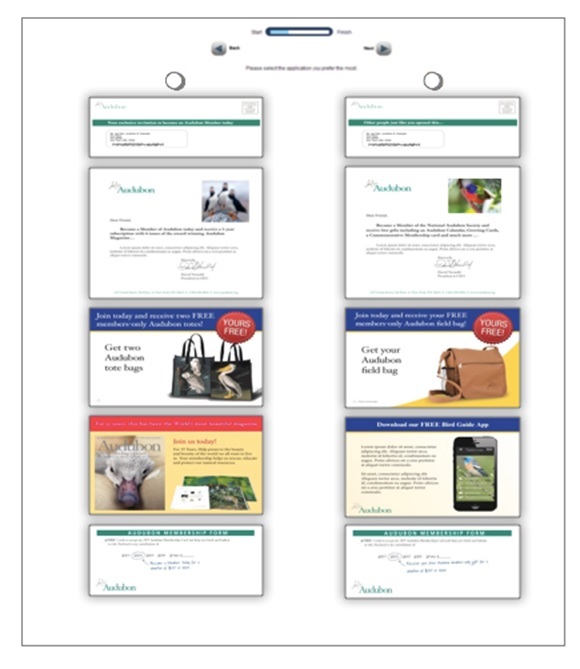RESEARCH UPDATE: An Online Test of Donor Preferences
A couple weeks ago, we reported how donors preferred to make their preferences known. We even featured a test from the American Diabetes Association that found that asking a donor’s priority mission area increases revenue by 11.6%.
While evangelizing donor preference, I got the question “what about online?”
After all, we are taught online to purge form fields as if we were Stalin in 1937. The commandment comes down from the online fundraising heavens: Let there be as little friction as possible between you and your donor’s sweet sixteen credit card digits.* This lined up with lots of test results; fewer fields means higher revenues.
But maybe donor preferences are the exception. Maybe, as we’ve argued, people want to tell you about themselves and about their reason for giving.
Thankfully, our friends at NextAfter tested this online with the Heritage Foundation. Like what the DonorVoice Pre-Test Tool recommended in the DMANF test, they asked donors “Where should Heritage focus its efforts?” rather than asking them to specifically designate their gifts. This was done online with a drop-down box of priorities.
The results? A 33.9% (statistically significant) increase in conversion overall. The one caveat is that it also saw a 56% decrease in donor conversion on mobile devices. Those visits were too infrequent for this to be statistically significant, but it seems plausible there could be mobile blowback because of the difficulty in using dropdowns in mobile forms.
What lessons can we learn from this?
First, to steal from Einstein, donation forms should be as short as possible, but no shorter. If you can get variables like donor preference (or commitment or identity) without creating friction. If you can do it while increasing your gifts, so much the better.
Second, this shows the power of donor preference. This is also just the first-line results. Now you know what a donor’s priority is for your organization. That, when played back to them in future asks, will almost certainly increase results just like it did for RSPB in the test discussed here.
 Third, this is another nice validation of the Pre-Test Tool. Two of the most frequent questions we get about the Pre-Test Tool are “does preference translate to actual results?” and “will the findings work in all channels?”. This test tends to indicate “yes” to both. We’ve certainly seen before that Pre-Test Tool findings help increase results; this lends additional credence since the preference results are both counter-intuitive and supported by two sets of real results.
Third, this is another nice validation of the Pre-Test Tool. Two of the most frequent questions we get about the Pre-Test Tool are “does preference translate to actual results?” and “will the findings work in all channels?”. This test tends to indicate “yes” to both. We’ve certainly seen before that Pre-Test Tool findings help increase results; this lends additional credence since the preference results are both counter-intuitive and supported by two sets of real results.
And seeing it happen both online and offline shows that if donor identity is the same, a donor is a donor is a donor, regardless of the channel.
What have been your experiences with donor preferences?
Nick
* Or fifteen for AmEx, but it doesn’t really roll off the virtual tongue.



Awesome to see this confluence of offline and online results with this one strategy. Thanks so much for sharing. I’m going to tell everyone they MUST do this!
The power of donor preferences indeed. I hadn’t seen this. Thanks so much for sharing, Nick. We’ve included a presentation from the founder of NextAfter in our annual Year-End Fundraising webinar series. They’re doing some interesting research.
[…] What would you hear back from your donors if you asked them where you should focus your efforts – rather than asking them to specifically designate their gifts? The Agitator with An Online Test of Donor Preferences. […]